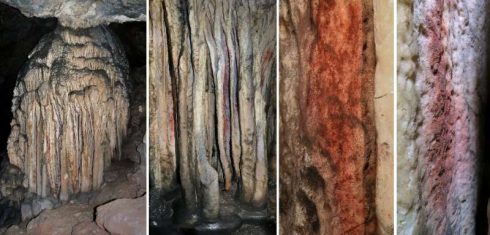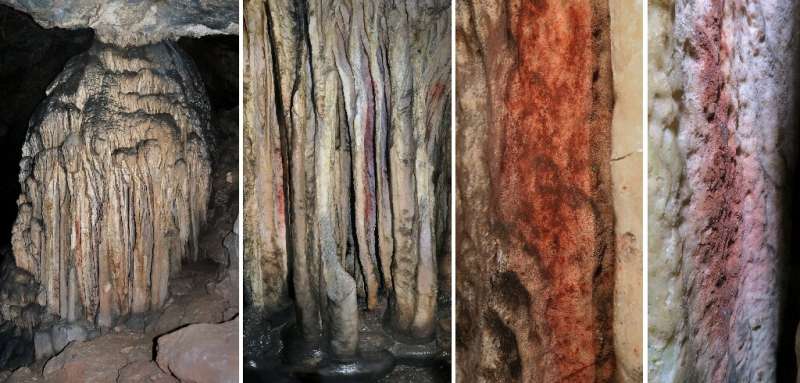CREATORS of the world’s first cave art may in fact have been Neanderthals and not early man, researchers have concluded after studying pigments found on stalagmites in a cave in southern Spain.
The findings overturn long-held beliefs that our cousin species, which became extinct around 40,000 years ago, were unsophisticated.
Instead it suggests that they were the first to create art, long before modern humans inhabited the world.
The study published in early August in the Proceedings of the National Academy of Sciences (PNAS) journal revealed that a red ochre pigment found on stalagmites dated to around 65,000 years ago.
The deep red markings were made on a colossus stalagmite found 100 metres into the Cueva de Ardales in Malaga province.

But archaeologists had argued over whether the pigment was a natural phenomenon caused by a build-up of minerals or if it had been created deliberately.
Researchers used new dating techniques to examine the traces and concluded that the pigment had been transported to the site and spat on to that particular area in a deliberate way, possibly as part of a ritual.
“The paintings are not the result of natural processes and show that the composition of the paint is consistent with the artistic activity being recurrent,” an extract from the study confirmed.
The pigment had to “be collected, transported and prepared in advance of entering the cave, implying deliberation and planning, which are additionally implied by the need to have adequate lighting,” said study author João Zilhão, an ICREA (Catalan Institution for Research and Advanced Studies) research professor at the University of Barcelona.
“The importance is that it changes our attitude towards Neanderthals. They were closer to humans. Recent research has shown they liked objects, they mated with humans and now we can show that they painted caves like us,” he said.
The Cueva de Ardales is considered one of the richest and best-preserved Paleolithic painted caves of southwestern Europe, containing over a thousand graphic representations.
READ MORE:
Click here to read more News from The Olive Press.








